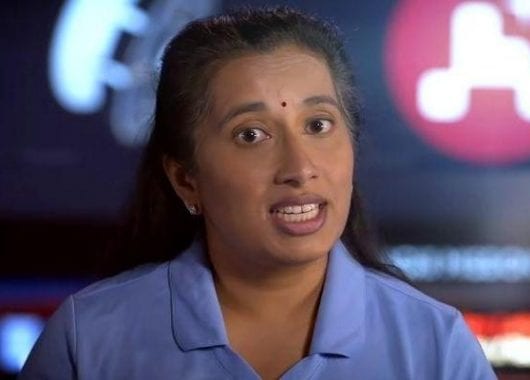Swati Mohan: From Star Trek to mission Mars

Swati Mohan led the guidance, navigation and control operations of the Mars 2020 mission (Photo: Swati Mohan/Twitter)
As NASA’s Perseverance rover landed on Mars on February 18, after seven months in space, it was Indian-American scientist Swati Mohan who confirmed the mission’s success. “Touchdown confirmed! Perseverance is safely on the surface of Mars, ready to begin seeking the signs of past life,” announced Mohan, soon after the rover landed, as cheers erupted in NASA JPL’s mission control room in California.
She also confirmed that the rover had survived a particularly tricky plunge through the Martian atmosphere.
The video, released by NASA, post the successful mission, has now gone viral, with many around the globe commenting on Mohan’s calm demeanour. Indians also pointed out that the NASA operations lead was sporting a bindi or pottu (a coloured dot worn at the centre of the forehead). Mohan is now an uproar even beyond the world of science, with some appreciating her for comfortably representing her cultural heritage in her appearance while others are hooked on the photo shared on Twitter, by Mohan herself, where she has dyed strands of her hair blue as a tribute to the recently completed mission.
Mohan, who led the guidance, navigation and control operations of the Mars 2020 mission has been associated with the mission since its inception and has been working on the project for almost eight years.
Bengaluru-born Mohan had emigrated to the United States when she was only a year old. Raised in Northern Virginia and Washington DC metro area, she completed her bachelor’s degree from Cornell University in Mechanical & Aerospace Engineering and her M.S. and PhD from Massachusetts Institute of Technology (MIT) in Aeronautics/Astronautics.
Over the course of her career with NASA, Mohan has worked on the Cassini mission to Saturn and GRAIL, a pair of formation-flown spacecraft to the Moon and has been a mainstay with the Mars 2020 mission since its beginning in 2013.
According to Mohan, her interest in space peaked after watching the popular TV show Star Trek when she was nine-years-old.
“Seeing the beautiful depictions of the new regions of the universe that they were exploring, I remember thinking ‘I want to do that. I want to find new and beautiful places in the universe.’ The vastness of space holds so much knowledge that we have only begun to learn,” she says.
She noted that her passion for space increased when she took her first physics class. “I was lucky enough to have a great teacher, and everything was so understandable and easy. That was when I really considered engineering as a way to pursue space,” she adds.
Commenting on her team’s role in the current mission, Mohan said during the cruise phase heading towards Mars, their job was to figure out how the spacecraft is oriented, and make sure it is pointed correctly in space.
Newspapers and commentators around the world have praised the diversity of the team behind NASA’s historic Perseverance mission, hailing the work of Swati Mohan in particular.
Currently working at NASA’s Jet Propulsion Laboratory in Pasadena, California, Mohan speaks passionately about her work. “Every day, there are so many exciting things happening that I am always in constant awe of what we get to do, and see, and learn, and the wonderful, incredibly talented people who make it possible. All the projects at JPL seek to expand human understanding and are almost always first of a kind in some way. It’s incredibly motivating to work in such an environment,” she says.









